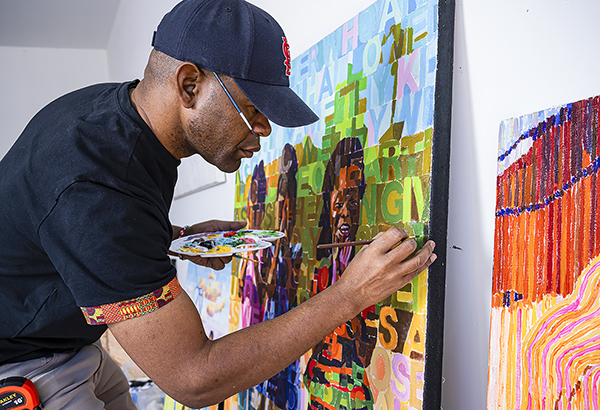Paul Banda was trafficked in the United States as a teenager. But he doesn’t use the word victim — he prefers survivor — and he hasn’t let it define his life since.
Banda first came to the U.S. in 1998 when he was about 14 years old. He grew up in Zambia, in southern Africa, surrounded by struggles with poverty, the AIDS epidemic and more. He and others were part of a boys’ choir, and they traveled across the U.S. performing at schools, churches and other events. Organizers told the boys that their mission was to raise money for a school in Zambia. But in reality, Banda and the other boys were trafficked, working long hours, not attending school and not being paid for their labors. The language and cultural barriers made matters worse.
Eventually, some boys escaped the choir and alerted federal authorities, who rescued the others. Banda, then 18 years old, moved to St. Louis, where he began working as a public safety officer at Washington University School of Medicine. He worked night shifts and began drawing to pass the time. People saw his work and asked him to draw for them, sometimes from family photos, and it brought joy to him and them.
“For the first time, after going through trafficking and everything I went through, I realized, ‘Wow, I’m valuable. People appreciate me. I can do something that makes them smile.’”
— Paul Banda
It soon became a way to work through his healing from the experiences of trafficking. Mostly self-taught, he drew bright, colorful scenes, often of mothers and children, reflecting his childhood in Zambia. He sometimes incorporates letters and numbers into the scenes, a nod to the importance of education and the difference it can make.
Banda also started taking classes and completed his GED. Some School of Medicine students encouraged his pursuits as an artist and in education. He took community college classes and then enrolled at WashU’s University College, ultimately earning a bachelor’s degree in global leadership in 2015 and then a master’s in human resource management in 2017 from Arts & Sciences.
During his undergraduate coursework at University College, a teacher encouraged him to open up about his trafficking experiences and make an impact. He once considered a legal career to help other trafficking victims. But he decided to focus on human resources and make change within organizations to ensure workers were valued and to push for equity in workplaces.
Banda’s experience at Washington University was transformative, learning from both faculty and fellow students. He also was appointed to serve on the university’s Equity and Inclusion Council and as a member of two state committees on human trafficking and domestic violence, one led by the state attorney general’s office and another by the Missouri Supreme Court.
“It’s underestimated the impact that University College has in changing people’s lives.”
— Paul Banda
Banda continued to pursue art as well. He took part in an art show on the Medical Campus, where his work was noticed. He was paid for some paintings and commissioned to complete other works. His practice has since grown, with exhibits in St. Louis and in Texas, including winning awards at art shows.
For the past four years, through June 2022, he had worked as a program manager in the School of Medicine’s Operations and Facilities Management Department, led by Melissa Rockwell-Hopkins, associate vice chancellor. Banda recently moved to Houston, where he continues to pursue a career in administrative operations as well as working as an artist.
Art, he says, can break down barriers and reach people in ways that conversation may not. People can view his paintings and see how other people live — and maybe be more open toward different perspectives.
“I see myself as an artist now. For a long time, I used to think I’m just a guy who tries to draw,” he says. “Today I see the impact, and I’m humbled and so grateful that I can share my story using my artwork.”


To see more of Banda’s art, visit: https://paulbanda.art/.



